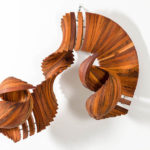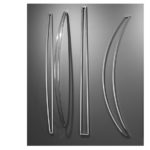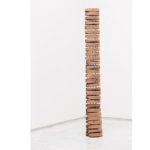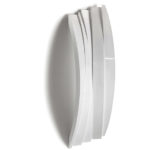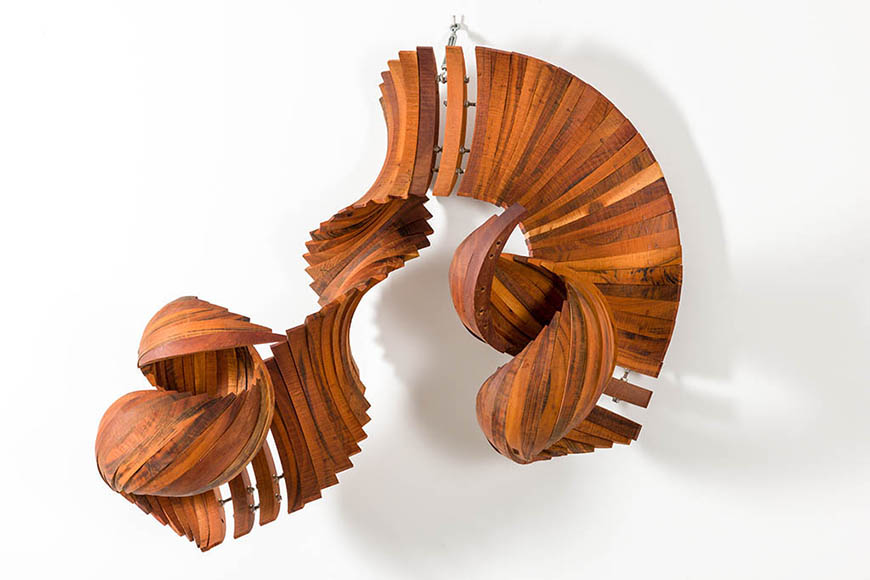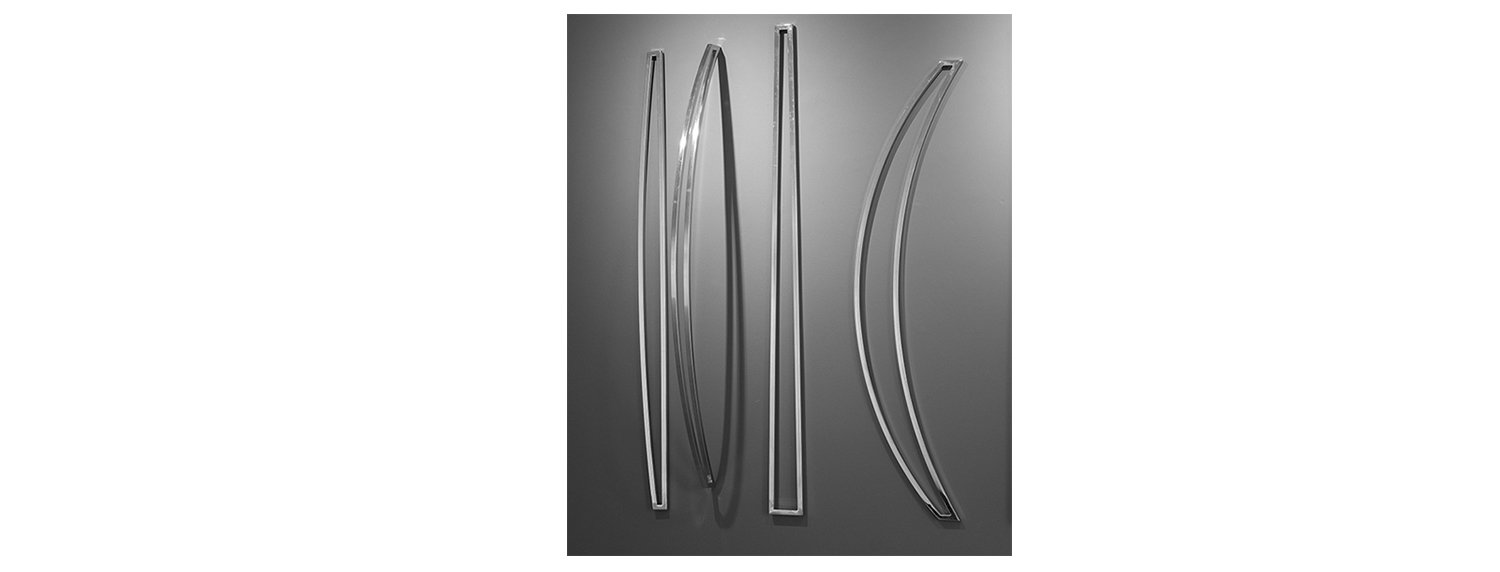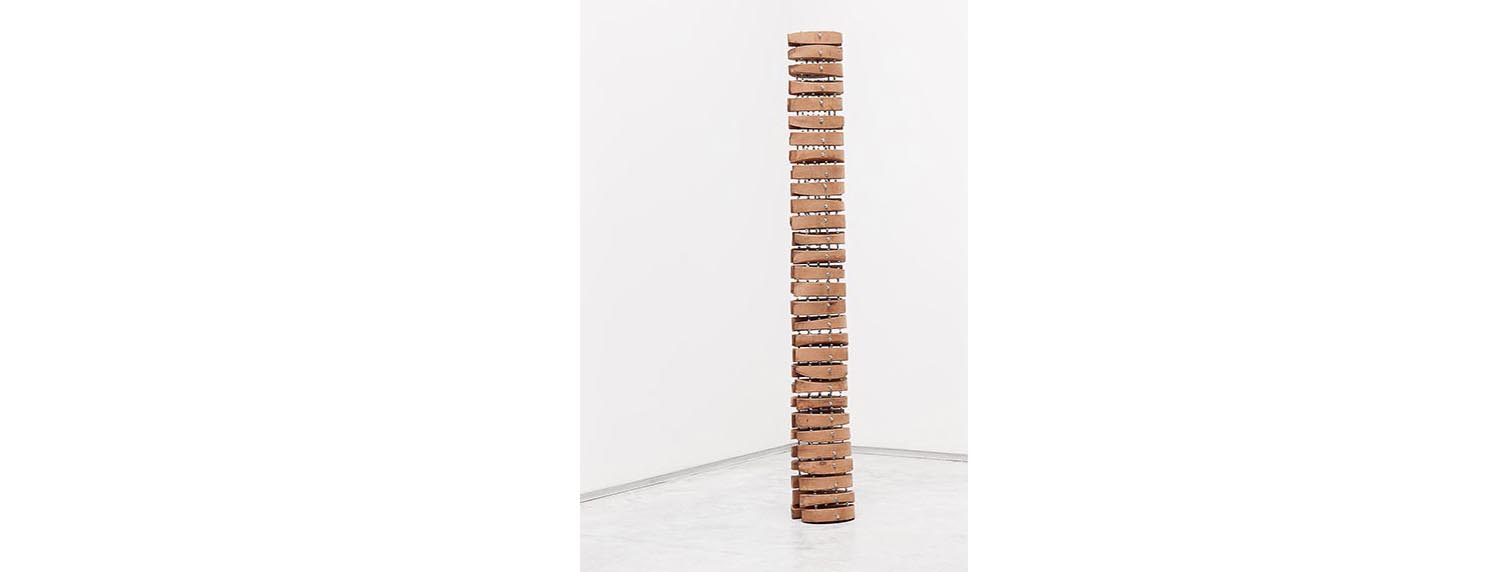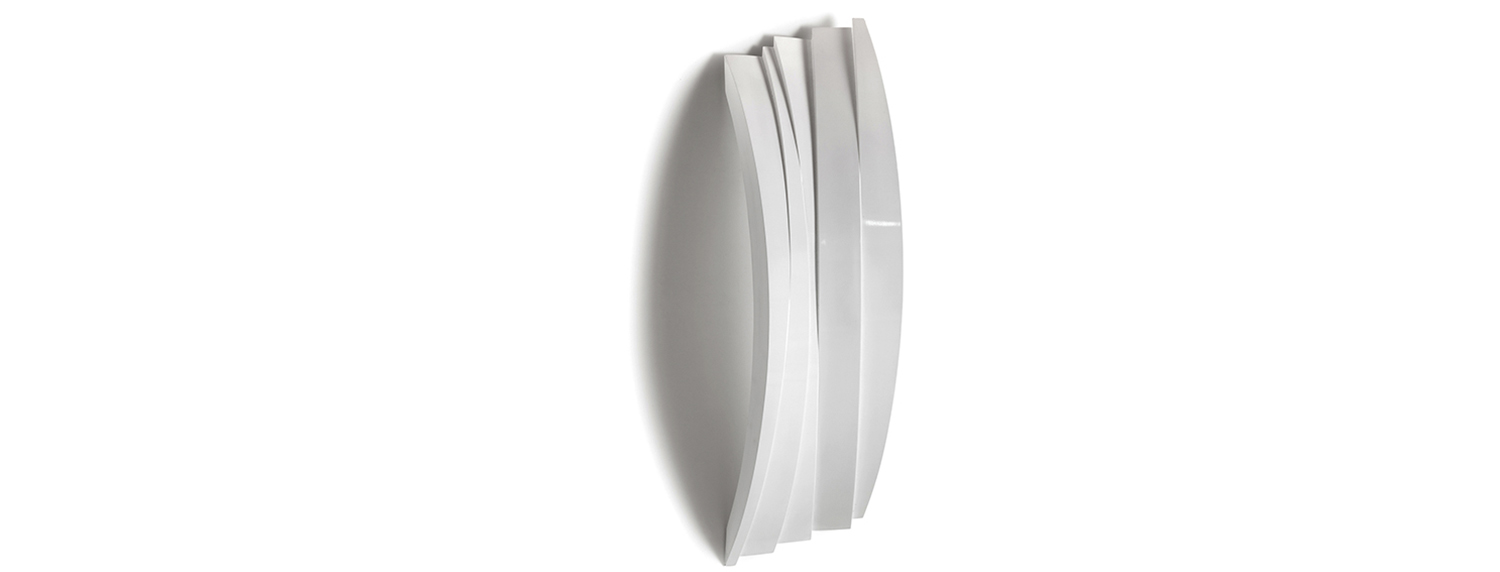Soon, forms, volumes, spaces, movement and the choice of materials in his works draw the attention. In his art, there is a constant search for a technical precision through incisive research and patient, through a contemporary language in treating the matter. At the same time, it is an art that has as its ground the land, knowledges and making of its people, which makes him a translator of the feeling of universality of the world he lives in his village, gates of the Bahia’s “sertão”. These are the marks of an artwork where the desire of expression surpasses the childhood and the experience of a countryside man, how his reality is like in his hometown, of cowboys and leather clothes, of the cattle, the appliances and tools indispensable to the daily routine, exhibited in the weekly street fair, going through man, now urban, student and, then, arts professor, with access to information, to curiosity, to the stimulation and to the study of what there is of most recent in the great centers of the world through not only techniques and materials, but its inventiveness in marking the here and now. These two flows do not crash into each other, because, in his work, united by signs and symbols of the Northeast region, the man is before his habitat, in his surroundings of sertão, by the side of the man of the sea that the capital added to him, in his navigation through harbors that take him to the four corners of the world. Taking in this trip his city, his people in his day to day, as reference, as investigation, as patience – his work is lonely as much as his speech is silent, letting him to come openly into the art he carries out – the personal adventure of a language that expresses his vision of the world, the world of today. His art is his brushstroke, his caligraphy, his writing, his voice, his shout, and his way of being in the world. And this exposes it to public visitation when carrying with it all of us, admirers, and let him exist as an expression by the thing we name art.
Florival Oliveira was born in Riachão do Jacuípe, Bahia, where he lives, today, sharing the place with Salvador, Bahia, in August 18, 1953. He started his carreer in 1976. His artwork is represented in the works of the Museu de Arte Moderna da Bahia; Museu de Arte Contemporânea de Feira de Santana; ACBEU Salvador; Library of the Universidade da Bahia; Museu Regional de Feira de Santana.
You were born in Riachão de Jacuípe, city in the countryside of Bahia, door to the sertão. What is there of you city, your people, your childhood as a field of reference or of investigation in your art? But, knowing that you live in Riachão, what is the exact translation in your artwork of your hometown?
“I see myself inside a boiling caldron”. My city is at the edge of a river that is affluent of Paraguaçu, forming the Jacuípe valley. In this space, it forged a life intertwined with macambira (part of the bromeliad plant family), spanking paddle, gerema, etc. Tricky as the teiú (Tupinambis, a lizard genus), the leather was the clothing that fought against storms, made the cattle, corral, aboio (northeastern cowboys) and ferrão (a type of knife), mark of one fifth of the production. Managing an economy, it arrives at the late baroque of Moors, neoclassical and eclectic influences. Modernity is something that enters through the gates of the sertão; the Museu do Sertão with its collection of English painters and portrait of the mulatta by Di Cavalcanti are engraved in my memory in 1960. Magazines and books of the library Machado de Assis, private collection, and the ritual of grabing the newspaper every day at noon coming from Bahia, which is how the city of Salvador was called, the capital, with the news of the construction of Brasília (Lucio Costa and Oscar Niemeyer). In the choice of place, matters of sensitivity: the air and the ground, “dry and hot in the summer, dry and cold in the winter, and a lot of salinity in the ground”. It is a good place to live. I like the contrasting landscape, too much dry and Veronese green, I see the sea in front of me and the constant breeze from the sunrise to the sunset. The work tools were revealing and as an apprentice, the glance was on the foreground, almost not giving permission to talk. A big open-air school. The artist manifests the absolute desire, constant delivery, and always a walk. As my legs are short, I chose to stay here.
You get into the Bahia artwork at a moment of intense relationship of young artists with the painting, but you chose the engraving. How was it to work in this “contraflow” and after Bahia has passed through a pleiad of engraving artists.
My unconscious cleaned by a state of ecstasy was decisive. I know I had something to resolve and very difficult by the tightness of the lonely life. Detached from material matters, coming from moments of uncertainties and restrictions, I had to organize in a line of action. They came to me from the movies, the theater, the photography, the engraving, and in this period, it was necessary to do something so we could advance. It is possible that anything may generate the concept and be language. I saw in the literature of Paulo Freire with the didactic, the manual guide for a sprocket-wheel, with super 8, in the theather with Oxene Gente Cordel, and in the experimental art week the relationship with the neoconstructivism (Helio Oiticica, Lygia Clark), a political positioning and the open mindset to all possibilities of action. A technical learning happens: a rotten plywood sheet on the wall of the school shed and a drawing. I cropped in those loosen plates of the intersperse the matrix of the wood engraving. That was the action inserted in the universe of the engraving, concluding my course in Licentiate degree with major in Drawing and Fine Arts from EBA/UFBA in 1980.
Also, still about this choice, the engraving responded to a market that was emerging at that moment, which wouldn’t make it not “different” from the others. Your artwork, with this choice, is always determined only to enable your expression, the expression of your language, your personal adventure? The detriment of this “market” would be like not betraying your vocation?
The responsibility, the context and the choice by certain supports insert me in the universe of the visual fine-arts thinking, “the workshops”, enough to understand these two relationships, market and language.
Also as “contraflow”, what is the reason you perform few exhibitions, exhibiting little of your work, not showing yourself more, although you have so significant artwork? Temper? Work characteristics? Personal view about art exhibits? Only do it when you have something very significant within your artwork?
Several exhibitions were made collectively and individually, going through thirty years of continuous work. And there should be something of a guidance and encouraging for an ever-increasing number of people with interest in fine and visual arts. That’s where I saw the need to work for the education of a public and a space for artists to have possibilities of developing their language, amplifying free courses and production space. The work, result of my research, was all shown in the city of Salvador.
I see your work treating essentially of language problems in art, forms, volumes, spaces, movements, materials, the search for a technique accuracy of an incisive and patient research on these grounds. How do you see this reading of your work?
These are the tools I have in my hands. The theoretical matters serve as a guide, I’m not concerned, but rather, pleased. The historical references are in the books. The pathway of the art for me is free as the water from the grotto that flows through the rivers taking to the sea the salts of the earth.
How is your creative process deflagrated within you, an image, a material, a brushstroke, a word?
The glance of the rhythmic movements, an athlete, a dancer, a song (percussion), I make this relationship with the tridimensional. The sound for me has something to do with painting, with the poetry of the color. It is a brushstroke, a writting, caligraphy, the Eastern inside the Western, Kandinsky, Duchamp, Brancusi, Rodchenko, Max Bill, Jesus Souto, Torres Garcia, Rubem Valentin, Agnaldo dos Santos, Mario Cravo Júnior and many other important artists that shimmer in my head. As well as photography and the animated movie have favored a reading of the contemporary, digging for residuals, sparkles of realities, for example the newspaper, utility objects and disposables, compilations of forms and assemblies of sequenced elements (wood).
Together with your artwork in the visual arts, you are a professor and coordinator of the workshops of the Museu de Arte Moderna da Bahia, and there is a younger generation going through this pathway. Please, talk a little about this teaching activity and this contact with the youngsters.
They are public utility, provide services to the society. It is a space differentiated from the context, open and free, as all public education. Therefore, they should be preserved and resourced with the necessary conditions to the good operation. It is gratifying that it exists in relationships and interactions, laboratory processes of exchanges, and open space without divisions and specific inter-relationship activities. The existence of an internal traffic is observed, which circulates through all processes with independent choices in degrees and levels of contents. The student is the artist and the artist is the professor.
(interview August/2007)


